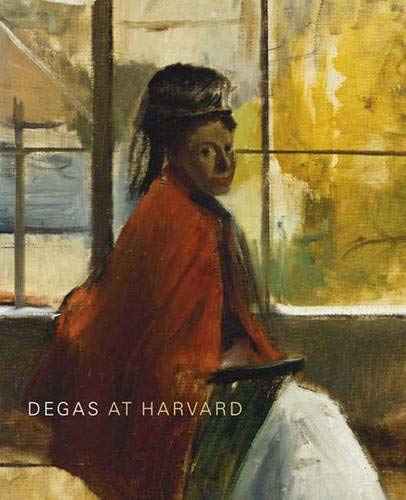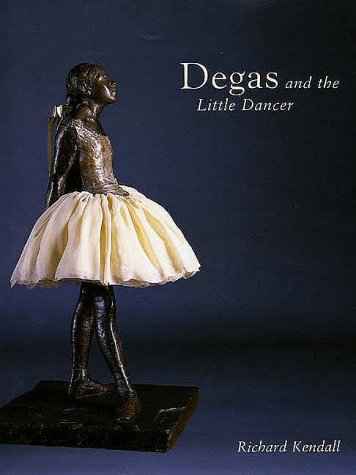
Book and exhibition review Degas at Harvard
Everybody associates Edgar Degas with Paris, ballet dancers, horse races, etc. Only a few initiated people will associate this artist with Harvard, Cambridge, Massachusetts. However, Harvard University and its art museums played a key role in understanding, popularizing, collecting and exhibiting the works of Edgar Degas.
The Harvard University Art Museums own one of America’s best collections of works by Edgar Degas. The Fogg Art Museum, The Houghton Library and Harvard’s Dumbarton Oaks Research Library and Collection in Washington, D.C. present more than 60 works by the artist at Harvard’s Arthur M. Sackler Museum until November 27, 2005 (Amazon.com, Amazon.co.uk).
In 1911, the Fogg was the world’s first museum to organize an exhibition exclusively dedicated to Edgar Degas. It remained the only monographic exhibition during the artist’s lifetime.
A key figure in the relationship between Harvard and the work of Degas was Paul J. Sachs (1878-1965). He was a financier and partner of the Goldmann Sachs firm, when, at the age of 37, he ended his promising career at Wall Street in order to dedicate himself to the arts and collecting. Sachs became professor of fine arts at Harvard and associate director of the Fogg. He collected some 22 works by Degas, which, over the years, he gave or bequeathed to Harvard. By his teaching and enthusiasm for the French artist, he inspired his students, many of which became future scholars, collectors, curators and museum directors. Some of them also bequeathed works by Degas to other museums, e.g. in Detroit and Philadelphia.
One Harvard student, Eugenia Parry (Janis), “broke scholarly ground with her exhibition and catalogue raisonné of Degas’ monotypes in 1968, which were based on her dissertation research…” Another Harvard student, Charles W. Millard, completed his doctoral thesis on Degas’ sculpture in 1971. He presented his research to the public three years later in connection with an exhibition in Dallas. In 1976, Millard published a catalogue raisonné of the Degas sculptures.
Among the exciting works by Degas at Harvard is the oil painting Interior (c. 1874). Sachs’ former student Henry McIlhenny had bought it in 1936, only four days after Sachs himself had taken it “on approval” for the Fogg, but could not raise the purchase prize and had to return it to the dealer. Sachs wrote to McIlhenny: “Three cheers and congratulations that you have acquired one of the greatest pictures of the 19th century.”
A superficial observer might overlook Interior as an ordinary bedroom painting. However, a closer like reveals an unusual subject: A man and a young women, partly undressed, are part of a story-telling picture. In 1912, the painting was entitled in a much more revealing way in the first published monograph on Edgar Degas by Paul-André Lemoisne: Le Viol (The Rape).
Another masterpiece by Degas at Harvard is the sculpture Little Dancer, aged fourteen, modeled around 1880. Another version of this sculpture is on display at the Fondation Pierre Gianadda in Martigny, Switzerland. The Little Dancer is by far my favorite bronze by Degas. The unnumbered copy at Harvard was a 1943 bequest to the Fogg Art Museum by Grenville L. Winthrop (class of 1885), who had purchased it in New York City in 1924.
The catalogue cover of Degas at Harvard (Amazon.com, Amazon.co.uk) shows a portrait of Alice Villette (1872). The painting was bought by C. Chauncey Stillman (class of 1898) in 1925 for the Fogg. Stillman was a member of the Fogg’s Visiting Committee and established the Charles Eliot Norton Chair of Poetry.
Other masterpieces at Harvard include Two Dancers Entering The Stage (c. 1877-78) and The Rehearsal (c. 1873-78). The first is a pastel over monotype in black ink, another bequest by Grenville, the second an oil painting, a bequest from the Collection of Maurice Wertheim (class of 1906).
The catalogue Degas at Harvard contains essays by Harvard curator Marjorie Benedict John and the Degas scholar Jean Sutherland Boggs, a former pupil of Paul Sachs. They examine the history of the acquisition of the Degas working, teaching and exhibiting collection at Harvard as well as the key figures in this enterprise. They also point out to the key role played by Harvard and its scholars and pupils in the understanding of Degas.

Marjorie B. Cohn, Jean Sutherland Boggs: Degas at Harvard. Yale University Press, October 10, 2005, 127 p. Order the exhibition catalogue from Amazon.com, Amazon.co.uk.

Recommended book: Richard Kendall et al.: Degas and the Little Dancer. Yale University Press, 1998, 192 p. Catalogue for an exhibition at the Joslyn Art Museum, Omaha, in 1998. Get the book from Amazon.com, Amazon.co.uk.
Article added on November 1, 2005. On July 19, 2019, this article has been divided into two: the present Degas at Harvard and Biography of Edgar Degas.